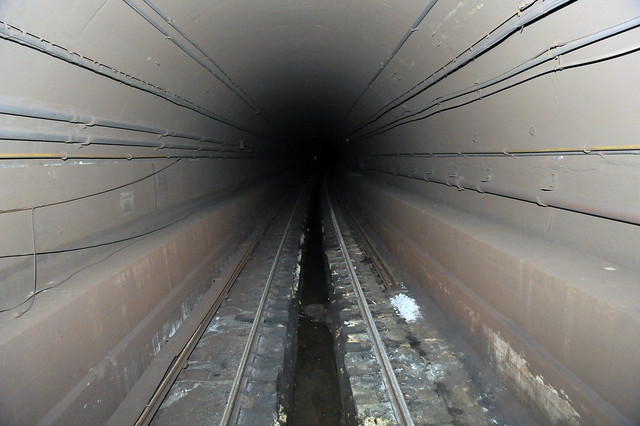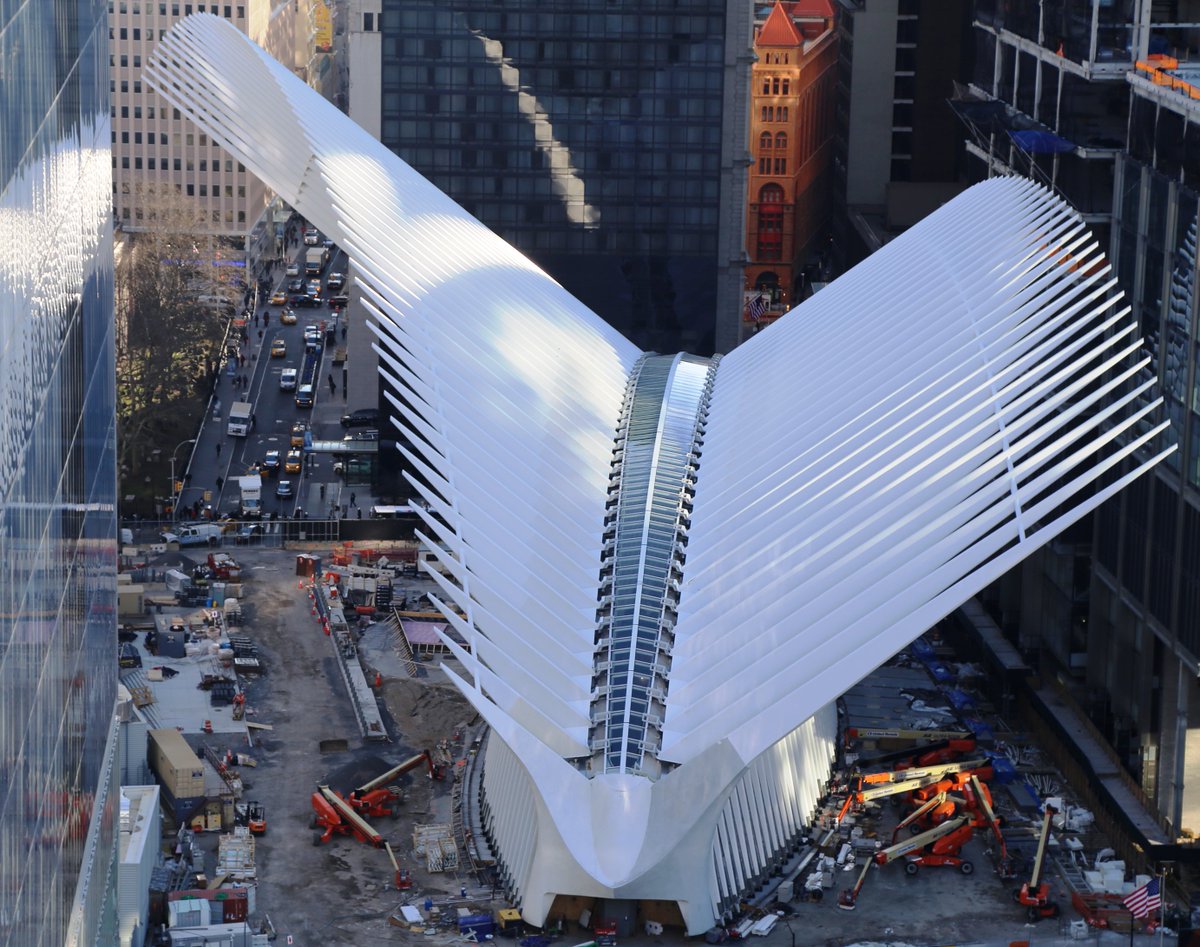It’s been a sliver over six months to the day since the MTA opened the 7 train’s new 34th St.-Hudson Yards subway station. After nearly 21 months of delays and bickering between the city and MTA that led to the project’s being cut in half mid-planning, the 34th St. stop was the first new subway station, other than the replacement South Ferry terminal, since the 63rd St. line opened in 1989. The new station, a deep-bore tunnel 125 feet below ground with a full-length mezzanine and new-to-the-MTA incline elevators, is supposed to be the model for future new stations along the Upper East Side. When I first saw it, it seemed big and somewhat sterile, but sterile isn’t a bad thing considering the state of many other New York City subway stations.
Eventually, the Hudson Yards stop will serve as a gateway to a new neighborhood in Manhattan, and the signs of that emerging neighborhood are easily visible at street level. Construction dominates the landscape, and the growth of the Far West Side is a fait accompli at this point. It’s not a matter of if, but when, and despite a paucity of riders in the early going, the 7 line will bring a whole heckuva lot of people to this supposed last frontier of Manhattan.
This past Saturday, I found myself near the Hudson Yards stop for the first time since its opening in September. There were no politicians, no one lined up to storm the station and no 7 train cookies this time around. Rather, there was a particularly speedy ride to Times Square and a station struggling to get by. On one hand, it doesn’t feel like a New York City subway stop; it’s too new and clean and bright and airy. But on the other hand, it feels very much like a New York City subway stop. The bathrooms, for instance, seem permanently in a state of never opening, and scenes from the station betray some of the reasons why subways arrived first in September of 2015 rather than December of 2013.
I’ll let these pictures, with a little bit of commentary, tell the full story.

Testing problems with these escalators were one of the reasons the station’s opening was delayed. (Photo: Benjamin Kabak)
One of the quirks/flaws of the Hudson Yards station is its lack of staircases. Since the platforms are so deep, the only ways to get from the fare payment level to the mezzanine above the platform involve either five escalators or two inclined elevators. On Saturday (and for some time now), these have been reduced to one down escalator, two up escalators and the inclined elevators because some of the escalators — a sticking point in getting the station open in the first — have been out of service. And when are these expected back in service? Well, take a look at the next photo.

Some of the escalators at Hudson Yards seem out of service indefinitely. (Photo: Benjamin Kabak)
According to the MTA’s website, one of these escalators has been out of service since February 7 and the other since February 24. It’s not clear when either or both will be back in service, and that sign doesn’t give me much hope for a speedy repair. It’s somewhat mind-boggling that the MTA is struggling with a technology as commonplace as an escalator, and the lack of stairs to the mezzanine level now feels like a glaring omission.

An industrial fan attempts to dry a puddle not far from the inclined elevators. (Photo: Benjamin Kabak)
Meanwhile, on that mezzanine level, an industrial fan sitting in front of a wall panel that simply says “water” and hides a bunch of water pipes is hard at work attempting to dry a leak from said water pipes. The water intrusion as this station isn’t nearly as bad as it was at the new South Ferry stop, but water from the cooling system dripped through earlier this winter in enough places to cause indoor icicles. Here, a temporary leak seemed to be plaguing the station, but a leak six months in is worrying enough.
In the grand scheme of the Hudson Yards station, these aren’t major problems that affect, say, the structural integrity of the station, but they are issues indicative of the MTA’s struggles with megaprojects. They are why Brooklyn residents don’t trust the MTA on its ducking and dodging on the L train repairs, and they are why Upper East Siders, while anticipating the Second Ave. Subway, are worried the same problems that delayed the 7 line will plague those three and a half new stops in a few months as opening day ticks nearer. Either way, it’s not a good look for the MTA.























